| PuWe1 As almost all this kind of old diluted PN, it is very faint and requires long exposures to get details. The Halpha signal is the strongest and draws a ring with several details in the structure while the OIII signal is extremely faint with a disc shape and no visible structure. |
PuWe1 ( = PNG 158.9 + 17.8 Comme la plupart de ces nébuleuses planétaires anciennes et diluées, elle présente une luminosité surfacique très faible, nécessitant des temps de pose importants pour obtenir des détails dans sa structure. Le signal Halpha contient l'essentiel de ces irrégularités de structure et est nettement plus "fort" que le signal OIII se présentant sous la forme d'un très faible disque assez uniforme. |
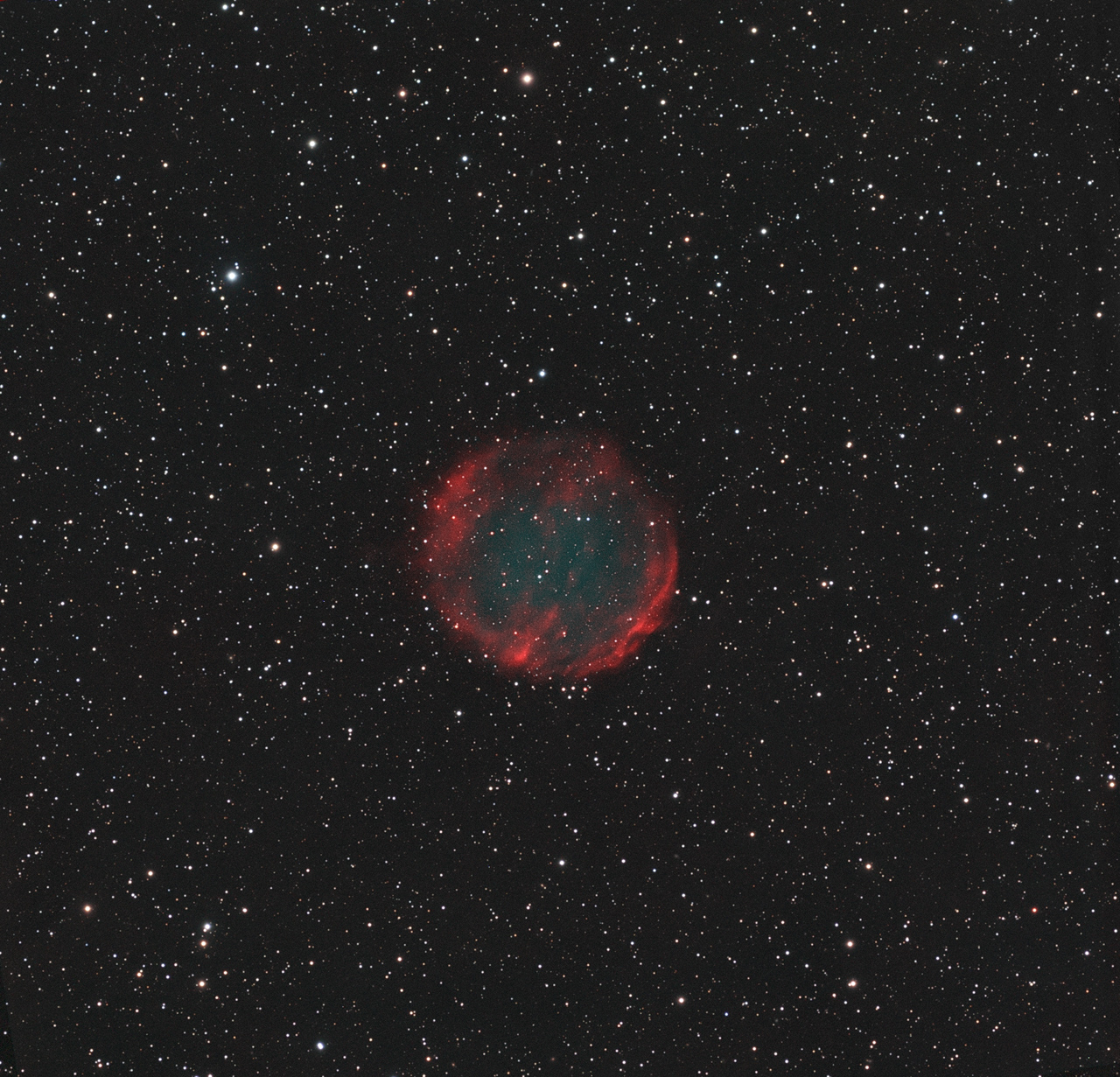 Composite "LHOO" color image L = Ha + RGB (stars) R = H-alpha (8h20) + R G = OIII (5h00) + G B = OIII + B Takahashi FSQ106ED refractor CCD camera Atik 4000 (Kodak KAI-4021M) @-20°C Astrodon Ha 6nm and OIII 5nm bandwidth filters |
|
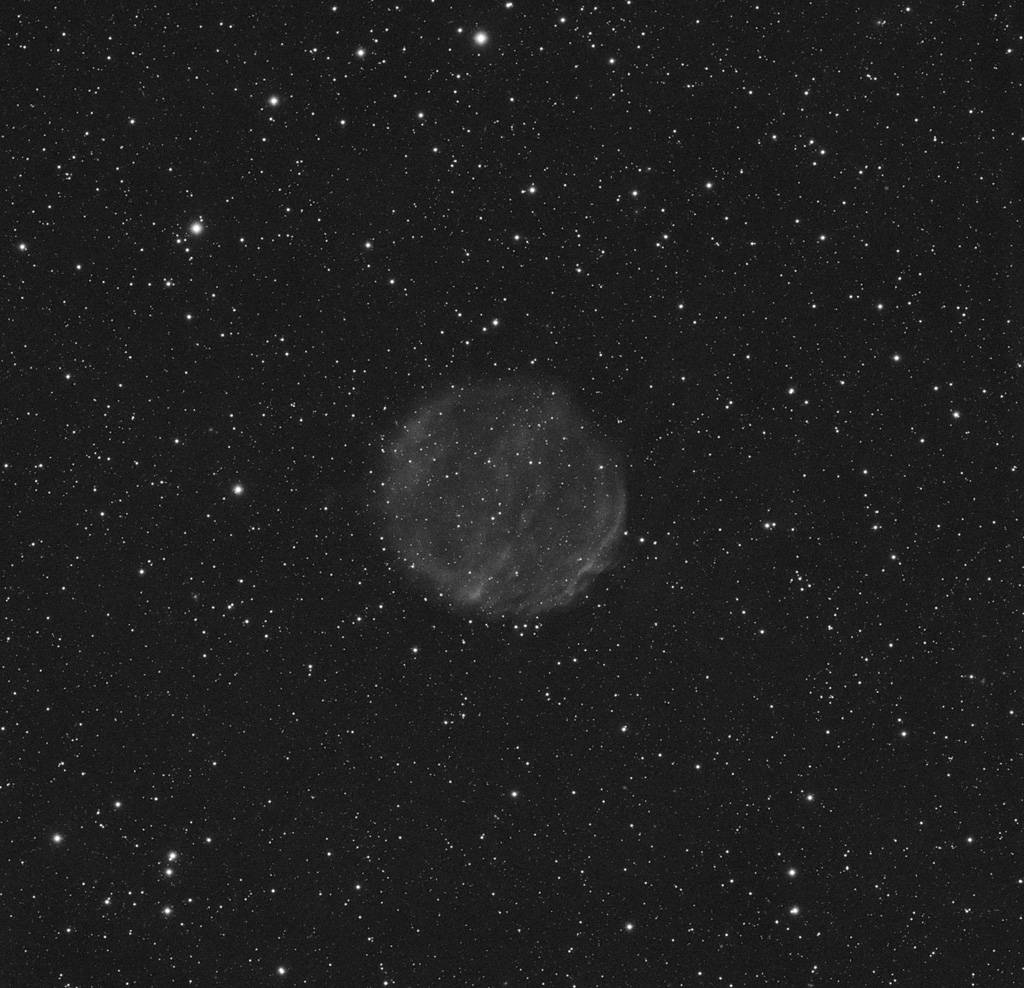 Halpha image. 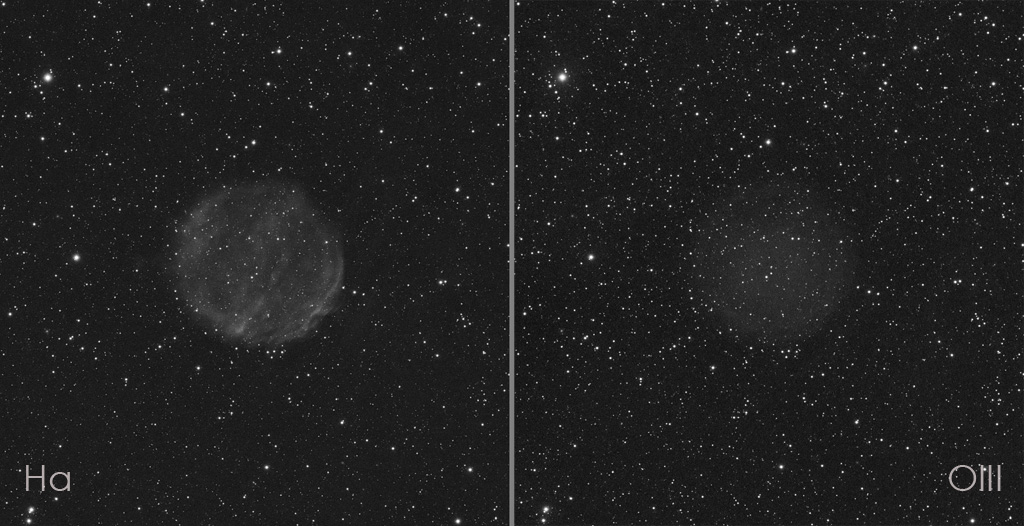
Relative response for the two considered emission lines.
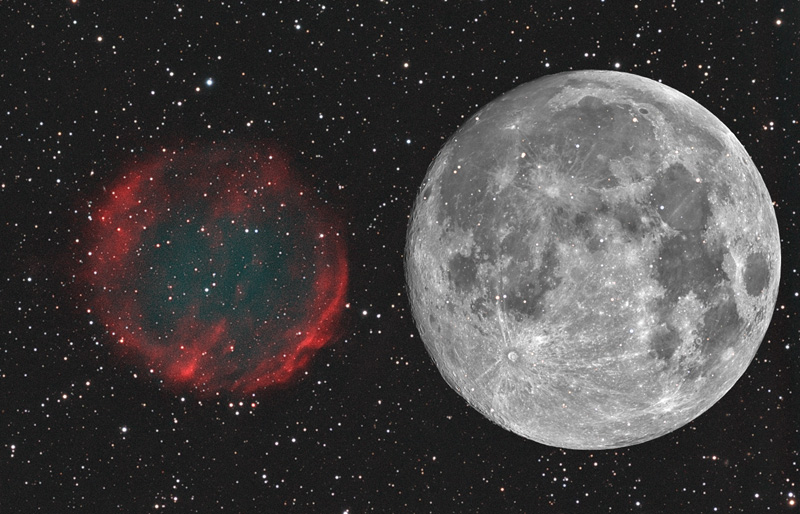 Size comparison with the moon |
|
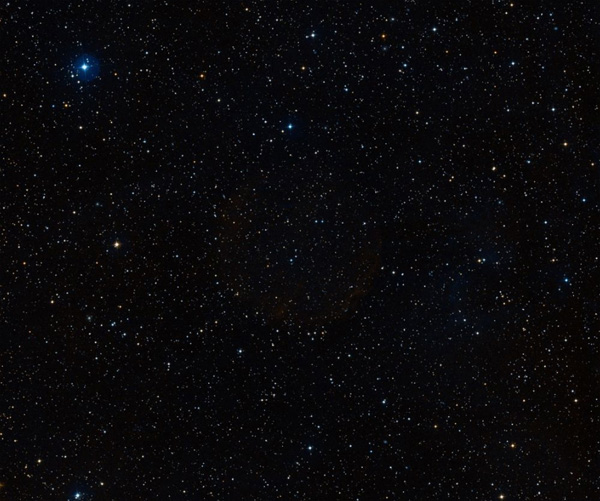 DSS red/blue composite image |
Other images: http://dg-imaging.astrodon.com/gallery/display.cfm?imgID=235 http://astroanarchy.zenfolio.com/p62690868/h1E972E9#h1e972e9 http://www.astroimager.net/Page-180-CCD-275.html Discovery paper: http://articles.adsabs.harvard.edu/full/1980A%26A....87L...5P |
 |
|




